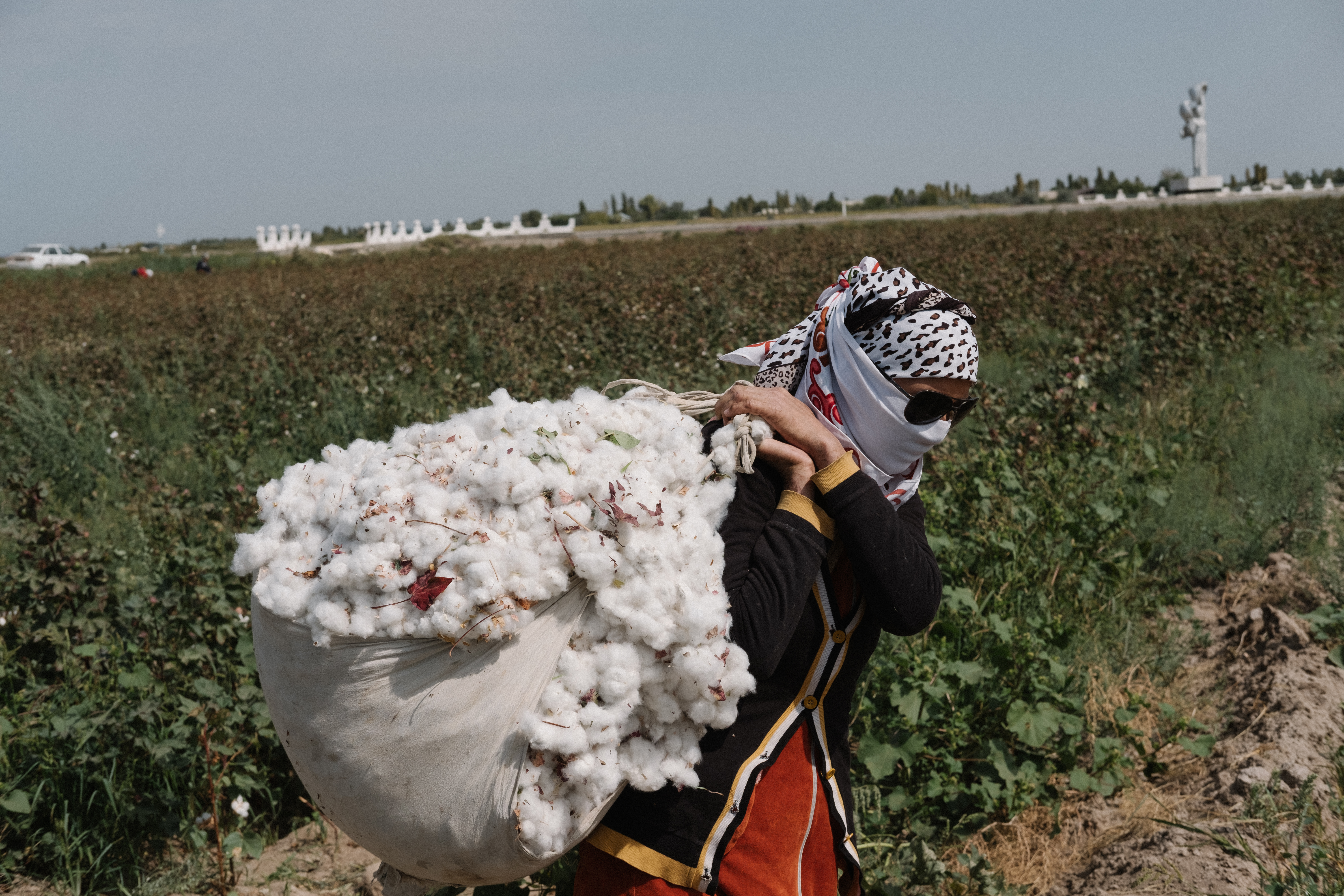On December 15, 2020 The Diplomat published this article by Lynn Schweisfurth about Forced Labor in Uzbekistan’s Cotton Sector.
Uzbekistan has made enormous progress in eliminating forced labor, but has yet to fully eradicate it.
After 10 years of monitoring and reporting on forced child and adult labor in Uzbekistan’s cotton sector, cataloging the journey toward the significant improvements that have been achieved through Uzbek President Shavkat Mirziyoyev’s ambitious reform program, there is a glimmer of hope that a historic moment may be on the horizon. However, Uzbek Forum’s monitoring findings of the 2020 harvest thus farshows that forced labor in Uzbekistan has not yet entered the annals of history.
Despite a considerable reduction in the number of those forced to pick cotton over the last three years, decades of state-orchestrated mobilization of cotton pickers has embedded itself so deeply in the production of cotton in the country that government officials, at least in some districts and regions, continue to resort to the usual methods of coercion to meet cotton quotas. There is also a risk that the rapid implementation of the cluster system, with unvetted corporate actors working with regional hokimiyats (local governments) to achieve ambitious production targets, is creating new incentives for forced labor. Orders from government ministries, daily cotton production goals, extortion of employees from state- and privately-owned enterprises to pay the “cotton tax,” i.e. pay to hire pickers from their own salaries, were documented by Uzbek Forum monitors during the 2020 harvest as in previous years, albeit to a lesser degree.
The cotton harvest this year was, for the first time, conducted in the absence of a state-set cotton quota, which was abolished in a presidential decree in March 2020. The quota was one of the key drivers for officials, including hokims and mahalla representatives tasked with the responsibility of fulfilling the quota, to forcibly recruit pickers. Abolition of the quota should theoretically have removed a key incentive to force people to pick cotton when voluntary pickers are in short supply.
However, documents obtained by Uzbek Forum monitors reveal daily cotton production targets for each district and the amount of cotton to be collected on a daily basis, which suggests that government involvement in the cotton harvest persists. Recruitment of pickers also remains largely organized by hokims and mahalla representatives. Indeed, Uzbek Forum’s report on the 2019 harvest identified a lack of independent and effective recruitment channels as a key obstacle to preventing forced labor, as officials can wield arbitrary power resulting in reprisals or loss of social benefits for refusal to go to the fields.
Hundreds of thousands of returned labor migrants and an estimated 670,000 job losses due to the pandemic resulted in a significant increase in the supply of voluntary labor. With higher rates of pay for pickers than in the past, 2020 should have been the year when there was no need to coerce people into picking cotton.
The Ministry of Labor reported that during the 2020 harvest, they imposed administrative fines on 42 officials, just one less than in last year’s harvest when, by all accounts, overall levels of forced labor were higher. For the Ministry of Labor, this is surely a sign that labor inspectors are doing their job better than before, but at the same time it is a concerning indicator that the problem is far from solved. Furthermore, only government officials have faced consequences, while private operators who benefit from forced labor appear to have escaped accountability.
The newly privatized cotton sector, and the emergence of “clusters” that integrate production, processing and manufacturing, has brought a new set of challenges and presents an opaque and mixed picture when assessing the extent of forced labor. Cluster operators, farmers, local officials, and government agencies appear to have merged into a tangled web of interests, which at times align and at others contradict. Perhaps the most pressing question for this year’s harvest is why there is any government involvement in a privatized sector.
According to a document published on the “Banker’s diary” Telegram channel, the Uztex-owned cluster Textile Finance Namangan, in the Uchkurgan district of Namangan region, collected 61,620 kilos of cotton through the forced labor of 981 bank employees, or pickers paid through extortion of bank employees, from October 4-5.
Another cluster owned by Uztex, Textile Finance Khorezm in Shavat district in Khorezm region, has been the subject of bitter complaints from farmers who appealed directly to Mirziyoyev. The farmers allege that Textile Finance Khorezm has repeatedly violated the terms of their contracts and that they did not receive the agreed price for cotton they had delivered and have been prevented from terminating their contracts with the cluster following pressure from the district hokim and the Department of Agriculture.
Uztex came under the spotlight in a joint report published in June 2020 by the University of Ulster and Uzbek Forum for Human Rights, which examined the integrity of the cluster system and the companies selected to operate it. Uztex was rated as one of the conglomerates exhibiting some of the most concerning red flags for corporate due diligence. Whether there is a direct causative relationship between companies lacking indicia of corporate integrity and the use of forced labor will require further analysis of the full monitoring findings of the harvest, but for the time being, these red flags demand serious attention.
While the breakup of the state-owned cotton sector has ended the state’s monopoly, the cluster system has developed monopolistic attributes, characterized by the fact that there is only one cluster per district. This leaves farmers in an even more precarious position in an environment where local officials wield disproportionate power over land tenure. They have no choice over whom they sell their cotton to and have little or no redress when clusters do not honor their contractual arrangements.
The situation of farmers becomes even more complex when they are under pressure to recruit sufficient numbers of pickers to fulfill their production targets set by the cluster. If they fail to fulfill their contractual obligations, it can result in confiscation of their land, which is decided by government officials. Under such circumstances, farmers may find they have little choice but to enlist the “help” of officials to find pickers.
Forced labor persists in Uzbekistan because of the complexity of unravelling the influence and involvement of government officials in cotton production, abusive cluster operators who are able to escape accountability, a lack of autonomy for farmers to negotiate fair contracts, and a disempowered civil society lacking in capacity and resources to monitor and report on labor rights abuses.
For brands and textile companies that may be considering re-entering the Uzbek market, these remaining challenges are cause for concern. As one well-known Western brand remarked recently, “The issue is not how much progress there has been. For us, forced labor is a binary issue. It either happens or it doesn’t and if it happens we must be able to exclude it from our supply chains.”
Uzbekistan, which has made enormous progress in eliminating forced labor but has yet to fully eradicate it, needs responsible brands and buyers to invest in the country, fuel job creation, and help set standards in the emerging textile sector. But for them to do that, they need effective monitoring and grievance mechanisms to exclude forced labor from their supply chains, ensure workers’ rights are protected, and remediate problems if they occur.
Uzbek Forum, as a member of the Cotton Campaign, has contributed to developing a responsible sourcing framework that would address this very issue: Enabling responsible companies to source cotton from those producers in Uzbekistan who are proactively ensuring that there is no forced labor in their production chains. This innovative bargaining model would involve a stronger role for civil society monitors and workers to monitor and report on forced labor and other labor rights abuses and galvanize the Uzbek government’s commitments on human rights.
Lynn Schweisfurth is the the founder of Uzbek Forum for Human Rights, a Berlin-based NGO working to defend and promote human rights in Uzbekistan.





